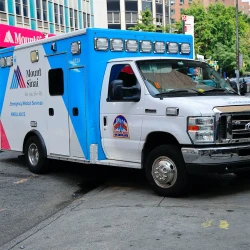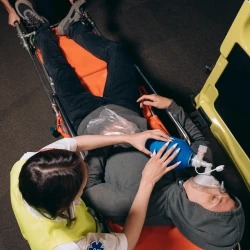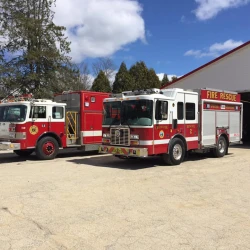Emergency medical care is a vast field with various levels of expertise. While most are familiar with the role of Emergency Medical Technicians (EMT), the role of Advanced Emergency Medical Technicians (AEMT) deserves special mention. Positioned between basic EMTs and Paramedics in terms of training and scope of practice, AEMTs play a crucial part in the emergency response hierarchy. Let’s dive deep into the world of AEMTs, exploring their training, roles, and significance in the healthcare system.
Understanding the AEMT Role
Before we delve into the intricacies of AEMT training, it’s vital to understand what sets AEMTs apart from other emergency medical care providers:
Intermediate Level Care
While EMTs provide essential emergency care, AEMTs are trained to offer more advanced interventions. Their services bridge the gap between EMTs and Paramedics, offering intermediate-level care.
Advanced Skills
AEMTs can perform certain tasks that EMTs can’t, such as administering specific medications, and initiating intravenous access.
Patient Assessment
AEMTs have a more in-depth knowledge of medical and trauma patient assessment compared to basic EMTs. They can interpret symptoms more comprehensively and act accordingly.
The AEMT Training Journey
Entry Requirements
The journey to become an AEMT starts after completing basic EMT certification. With that foundation, individuals can enroll in AEMT training programs.
Curriculum Overview
AEMT training covers:
-
Advanced Airway Management: Including the use of supraglottic airways and dual lumen airway devices.
-
Pharmacology: Understanding and administering a broader range of medications.
-
IV Access: Initiating and maintaining intravenous lines.
-
Patient Assessment Techniques: Deeper dive into assessing both trauma and medical patients.
-
Specialized Patient Care: Training on handling obstetric emergencies, pediatric patients, and certain trauma situations.
Duration and Format
Typically, AEMT courses are shorter than paramedic courses but longer than basic EMT courses. Most programs run between 3 to 6 months. The training is a mix of classroom instruction, hands-on lab work, hospital clinical rotations, and in-the-field training.
Certification
After completing training, candidates must pass the National Registry of Emergency Medical Technicians (NREMT) AEMT exam to become certified. This certification is usually followed by state-specific licensure.
Scope of Practice
The AEMT scope of practice varies by state, but generally, they can:
-
Perform all duties of an EMT.
-
Administer additional medications.
-
Initiate IV therapy.
-
Use advanced airway devices.
It’s important to note that while AEMTs have a broader skill set than EMTs, there are procedures and medications reserved solely for Paramedics.
AEMTs in the Real World
In the practical world, AEMTs are found working alongside other emergency medical care providers:
Ambulance Services
Many ambulance services employ AEMTs, especially in areas where the availability of paramedics might be limited.
Emergency Departments
AEMTs can also be found in hospital emergency departments, assisting doctors, nurses, and paramedics.
Specialized Roles
In some areas, AEMTs may find roles in specialized sectors such as industrial sites, oil rigs, and entertainment venues.
The Future for AEMTs
With the ever-evolving world of emergency medical care, the role of AEMTs is more significant than ever:
Increased Demand
As healthcare systems recognize the importance of intermediate-level care, the demand for AEMTs is on the rise, especially in remote or underserved areas.
Professional Advancement
For many, becoming an AEMT is a stepping stone. With their advanced skills, transitioning to a paramedic role can be smoother.
Continuous Learning
Like all healthcare professions, AEMTs need to stay updated. Regular training, workshops, and recertification ensure they remain at the top of their game.
Conclusion
The role of Advanced Emergency Medical Technicians is paramount in the pre-hospital care continuum. They bring a blend of foundational emergency medical knowledge and advanced skills, ensuring patients get timely and appropriate care. For those aspiring to make a mark in emergency medical care, pursuing AEMT training and certification can be a fulfilling and rewarding journey.





